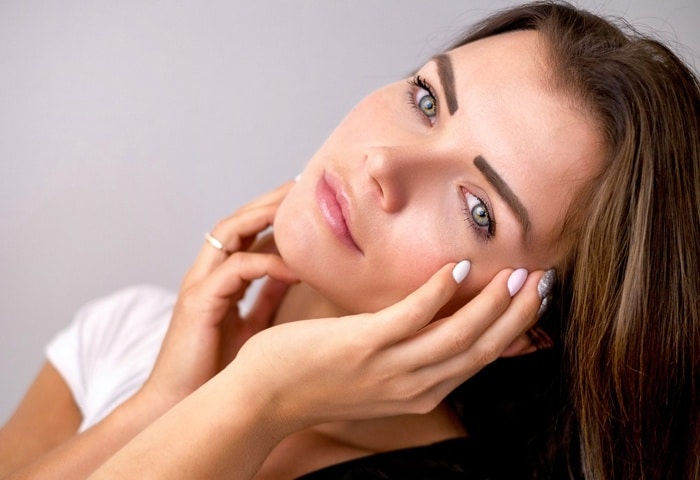
Most of the time when we talk about fat, we’re complaining because we have too much of it.
When it comes to skincare, though, we need healthy fats to look our best.
Except we don’t call them fats—we call them “lipids.”
What are Lipids?
Lipids are skin’s natural fats, and unlike the fat we get around our bellies, these fats are good for us. They form part of the structure of the skin and are crucial for maintaining moisture, strength, and elasticity.
Lipids come in two main types:
- Sebaceous: These live in the sebaceous glands, which are the pores, and include triglycerides, wax esters, and squalane. As the pores secrete sebum (skin oil), these fatty acids coat the skin to help keep it healthy.
- Epidermal: These exist in the outer layer of skin (epidermis), filling in the spaces between the cells like mortar between bricks. They include cholesterol, fatty acids, and ceramides.
Let’s look at each of these more closely:
- Triglycerides: These form the major component of sebum, and help protect from water loss.
- Wax esters: These seal in moisture while preventing excess hydration. They also help protect from free radical damage.
- Squalane: This helps prevent fine lines and eliminate dry patches. It’s a precursor to cholesterol and is essential for skin’s structure, as well as a natural lubricant.
- Cholesterol: This helps improve the skin’s elasticity and accelerate the skin barrier’s recovery. It has a water-binding property and helps retain moisture.
- Ceramides: These help improve skin’s hydration—dry skin is typically caused by a lack of ceramides.
- Fatty acids: These help maintain lipid balance, contributing to skin repair. They also help create the skin’s acid mantle, which protects from oxidative damage.
All of these lipids work together to keep the skin healthy and young-looking. Lipids are involved in cell turnover, maintaining a healthy barrier function, improving texture and tone, increasing hydration, and reducing the development of fine lines and wrinkles.
When the skin doesn’t have enough lipids, you may notice roughness, tightness, a loss of facial fullness, a dull skin tone, and more fine lines and wrinkles. The skin may also become more reactive, red, and inflamed.
Why Lipids in Skin Care Are Important
Many quality skincare products (including CV Skinlabs products) contain lipids. If we already have lipids in our skin, why would we need to add more?
First of all, when we’re young, we have all the lipids we need, but then as we age, lipid production declines, and that’s what often causes the skin to look and feel dryer. The surface becomes rough, the tone turns dull, and the skin loses it’s fullness and starts to look drawn and baggy.
As we lose lipids in the skin, the outer barrier is also compromised, which only makes things worse. When that barrier is weak, skin loses more moisture and is more affected by exposure to the sun and pollution. This leads us to premature aging, wrinkles, sagging, bagging, and all the things we don’t want.
The following factors can also deplete the skin’s lipids:
- Cleansing with products that upset the skin’s natural pH balance
- Over-exfoliating skin
- Exposure to winter weather (dry winter air can deplete ceramide levels)
- Exposure to sun and pollution
- Poor diet
How to Support the Lipids In Your Skin
To keep skin looking it’s best, we can counter the effects of lipid loss with skincare products that add those lipids back in. Our CV Skinlabs products, for example, contain lipids like ceramides and fatty acids that help replenish the skin’s supply.
Benefits of using skincare products with lipids include:
- Increased moisture and smoothness
- Decreased visibility of fine lines and wrinkles
- Improved skin barrier
- Improved elasticity
In addition to applying lipids topically to your skin, it’s also important to get more lipids in your diet. The following foods are known to be rich in healthy fats that can help boost lipid production in the skin:
- Salmon and other fatty fish
- Walnuts and other nuts
- Avocados
- Seeds
- Eggs
- Vegetable oils
Do you use skincare products with lipids?

